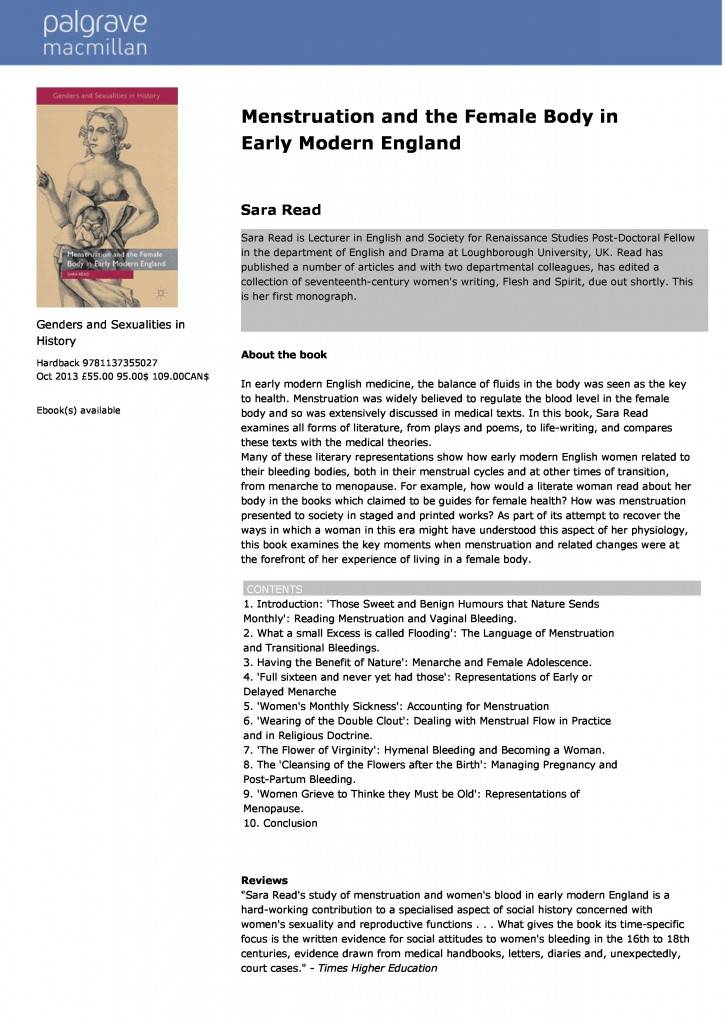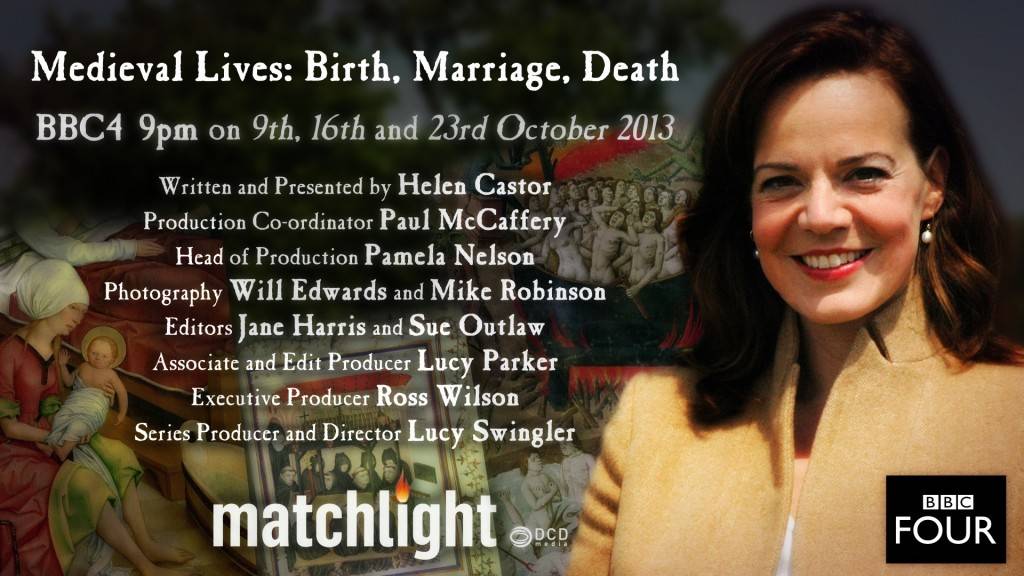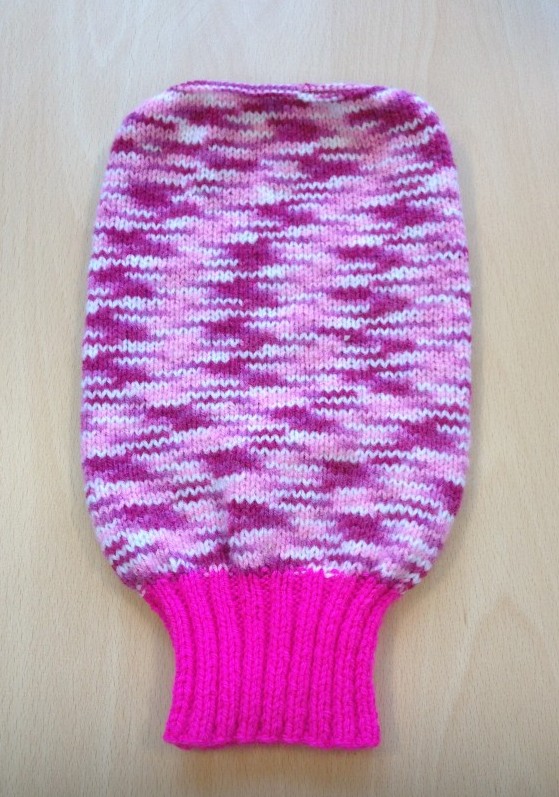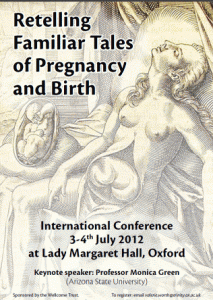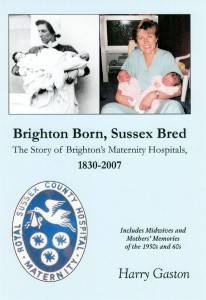Author Archives: Catherine
9th annual Interdisciplinary Workshop on Reproduction
The 9th annual Interdisciplinary Workshop on Reproduction at Cambridge will be held on Friday Nov. 15th from 9.00 a.m. – 7.00 p.m. Registrations have unfortunately already closed, but the programme and Twitter coverage may be of interest.
Presentations this year range from oocyte preservation, to the emerging meanings of cells, to the role of motherhood. This year’s aim is to consider how reproduction is constructed and communicated within academic institutions and broader society.
Full programme list
Follow the dialogue on Twitter via the hashtag #Communicatingreproduction
BBC 4 series: Medieval lives: birth, marriage, death
Janette Allotey, Chair of De Partu, was interviewed by Helen Castor for the first programme in the series, which was broadcast on 9th October 2013. It will be available on BBC iPlayer to view or download until October 8th 2013.
Knit your own womb?
By Helen King (helen.king@open.ac.uk)
It was one of those moments that only happens when academics and practitioners are in the same room…
For about a year, I had been thinking about the history of visual representations of body parts, and had been introducing audiences in the UK and beyond to some of the knitting patterns available to make a womb. On knitty.com, for example, you can find a pattern from the amazing M.K. Carroll which allows anyone with needles and some bright pink wool to make a ‘cuddly’ womb with pipe-cleaner fallopian tubes and ovaries. If you think I’m making this up, look at http://www.knitty.com/ISSUEwinter04/PATTwomb.html
M.K. Carroll took classes in anatomy and physiology which informed her work. But as she points out on the website, her knitted womb is ‘not completely anatomically accurate’. I was interested in two things here. First, the effect of knitting on making body parts look less terrifying and more ‘cuddly’, which is part of a wider movement in contemporary art towards knitting things that one would not normally associate with this medium; for example, cars). Second, the choice of what to include in ‘a womb’. In M.K. Carroll’s womb, tubes and ovaries and cervix are all important, and the cervix needs to ‘look plump (“pouty”, if you will)’.
I mentioned this to the other members of the De Partu network, expecting the usual surprised response. Instead, they were not thrown in the slightest. ‘Oh yes’, they said, ‘we all know about knitted wombs. We have them, and we make them. They are very useful in parentcraft classes. Would you like us to show you our wombs?’
My jaw dropped. And once I saw the wombs, I was even more amazed and delighted. Firstly, because these wombs are not always brightly coloured – in fact, one of the 1960s patterns that was kindly supplied to me by Lynn Balmforth, the librarian of the National Childbirth Trust, makes it explicit that these should be made in neutral, non-scary, colours, to make the effect more ‘acceptable’. Nor are they supposed to be ‘lifelike’. And secondly, because these wombs don’t bother with the ovaries and tubes – irrelevant by this stage of the proceedings! – but focus on the size of the gravid uterus and on the role of the cervix. They are used to show how contractions work and how the cervix dilates. A ball, representing the head, is pushed through the cervix and a ribbon through the external os can be used to control this.
This photograph was sent to me by Sue Tully, who is a Senior Lecturer in Midwifery at Bournemouth University; it gives you the general idea, although this one contravenes the 1960s guidelines on colour schemes! If you have any images of knitted wombs or information on how they were used, I’d love to receive it.
New book – Nursing and midwifery in Britain since 1700
Nursing and midwifery in Britain since 1700, co-edited by Professors Billie Hunter and Anne Borsay, has just been published by Palgrave Macmillan.
 It is a collection of essays that explore and compare the distinct histories of nursing and midwifery in Britain from the beginning of the eighteenth century to the modern day. The book is aimed at students and practitioners. There are chapters by De Partu members Alison Nuttall, Helen King and Christine Hallett, as well as by Pat D’Antonio, Winifred Connerton, Anne-Marie Rafferty and Jane Sandall. A snip at £19.99!
It is a collection of essays that explore and compare the distinct histories of nursing and midwifery in Britain from the beginning of the eighteenth century to the modern day. The book is aimed at students and practitioners. There are chapters by De Partu members Alison Nuttall, Helen King and Christine Hallett, as well as by Pat D’Antonio, Winifred Connerton, Anne-Marie Rafferty and Jane Sandall. A snip at £19.99!
Retelling familiar tales of pregnancy and birth: Oxford 3rd-4th July 2012
This conference brings together leading specialists from a range of the medical humanities to explore the trope of the retelling of stories about pregnancy and birth. Taking a very broad geographic and chronological focus, our objective is to encourage innovative interdisciplinary exchanges by addressing the following questions:
How did/do methods of diffusion (print culture, images, drama, ultrasound and modern medical technologies) encourage the retelling of familiar birthing tales, and how were/are new ones added?
Why did/do some stories of pregnancy and birth circulate more widely than others?
When stories are retold, which details of the original are always retained, which are lost in the retelling, and how and why do new accretions creep into the story?
Papers by some twenty researchers, from humanities, social sciences and health care, will be given over the two days, with generous time allowed for audience discussion and questions. We are grateful to the Wellcome Trust for a grant subsidising the conference.
Janette Allotey (Manchester), Helen King (Open University) Valerie Worth (Oxford)
Provisional programmeas (6/6/12)
Day 1:
11-12.15
Opening session: organisers’ introduction
Sharon Aviva Jones (Applied Drama, Goldsmith’s, London), ‘The Performance of Childbirth: Birth Stories and Rites of Passage in the UK today’
Lisa Hinton (Health Experiences Research Group, Oxford), ‘Healthtalkonline and stories of birth’
12.15 lunch
14.00 Birth in fiction
Véronique Duché (Languages and Literatures, Melbourne), ‘The birth of/in French fiction (16th Century)’
Charlotte Woodford (German, Cambridge), ‘Feminist re-tellings of pregnancy and birth experiences in fin de siècle Germany’
Giulia Zanini (Political and Social Sciences, Fiesole, Italy – PhD) ‘“The most beautiful thing that I remember about my childhood is the story of my birth”. Italian intended parents of donor-conceived children and the creation of family histories and fairy tales’
15.30 teabreak
16.00 Telling tales under God
Rebecca Johnson (History, Princeton, US – PhD), ‘Dolores spatio quatuor dierum: Approaching Childbirth in Medieval Catalonia through a Miracle Attributed to Ramon de Peñafort’
Vina Vaswani (Director, Centre for Ethics, Yenepoya University, Mangalore, India), ‘Reinforcing values in the birth of a baby through mythological/folk tales’
17.00 Keynote, Monica Green (History, Arizona), “The Travels of Muscio: Making Medieval Obstetrics out of a Late Ancient Text”
Day 2:
9.30 The father’s tale
Holly Tucker (French and Italian/History of Medicine, Vanderbilt University, US), ‘Pregnant Men?: Stories of Atypical Reproduction in Early Europe’
Angela Davis and Laura King (History, Warwick), ‘Figure of Fun to Birthing Partner? Childbirth stories of and by fathers in post-war Britain’
11.15 coffee
11.30 Unusual births or mothers
Theresa Earenfight (History, Seattle), ‘Narratives of Regal Maternity in Late Medieval and Early Modern Spain’
12.00 Midwives’ responses
Round table discussion
12.30 lunch
14.00 Powerful stories
The eighth-month-child: Lesley Bolton (Classics, Calgary), ‘The eighth-month child: Recasting an old medics’ tale: transmission and transformation of theories on inauspicious periods of gestation’
The wandering womb: Alison Klairmont Lingo (History, University of California, Berkeley) and Stephanie O’Hara (French/Women’s and Gender Studies) University of Massachusetts Dartmouth), ‘Capturing the Wandering Womb in the Early Modern Era: Louise Bourgeois and The Compleat Midwifes Practice’
15.15 tea
15.45 Tales from the experts
The gynaecologist: Ramona A. Braun (History and Philosophy of Science, Cambridge), ‘Against the timebomb: Laparoscopic treatment of the ‘disease’ of ectopic pregnancy in gynaecologists’ accounts of the 1950s’
The German ‘family midwife’: Jennifer Jaque-Rodney (International Delegate –
German Association of Midwives), ‘Family midwifery. Health promotion through bonding for mother and child’
The doula: Holly Hendry and Dr Salma Siddique (Life, Sport and Social Sciences, Edinburgh Napier) ‘Stories retold in the spaces between pregnancy and childbirth’
17.30 Midwives’ panel and general discussion
Practical details
1) Dates and venue:
The conference will take place in Lady Margaret Hall, one of the colleges of Oxford University, on 3rd and 4th July 2012. Oxford is easily accessible by train or coach, and it is a 20-minute walk from the station to Lady Margaret Hall (or a short taxi ride). ). If you are arriving at Heathrow, there are regular buses to Oxford (Gloucester Green is the terminal you need in the city centre). If you are arriving by car, we recommend you park in one of the city’s ‘park and ride’ car parks, as parking in the city centre is extremely limited!
2) Accommodation
The conference organisers are able to provide accommodation (in single rooms) for those giving papers at one of the north Oxford properties belonging to Trinity College. Other delegates might wish to use the website of rooms available at Oxford colleges to make their own accommodation bookings: http://www.oxfordrooms.co.uk/. Alternatively, information on hotels is available on Oxford city’s tourist website.
3) Registration:
To register for the conference, please book completing the booking form and emailing it back to valerie.worth@mod-langs.ox.ac.uk by Friday 8th June 2012. Please note that the number of delegates attending is limited, so early booking is advised.
Payment should be made either by cheque (made payable to Trinity College Oxford), drawn on a UK bank, or by debit or credit card (charges to be handled by Trinity College Oxford). Once bookings have closed, you will be sent an email asking you to pay the total due for all bookings by Monday 19th June.
Brighton born, Sussex bred: the story of Brighton’s maternity hospitals, 1830-2007, by Harry Gaston
This book by Harry Gaston, a local historian, has recently been published. According to the blurb, “Brighton Born, Sussex Bred shows how maternity care has developed over the last 200 years in Brighton and Hove and nationally … Fully illustrated, the book includes the experiences of mothers and midwives from the 1950’s to 1980’s as they tell their birth stories.”
The book is on sale via the Friends of Brighton and Hove Hospitals at £12.00 per copy including postage and packing: please order using this form.
Recently published: A social history of maternity and childbirth: key themes in maternity care, by Tania McIntosh
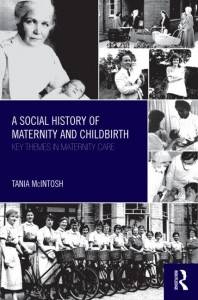 Published 5th March 2012 by Routledge – 188 pages
Published 5th March 2012 by Routledge – 188 pages
This new work considers the significance of the regulation and training of midwives and doctors, exploring important aspects of maternity care including efforts to tackle maternal deaths, the move of birth from home to hospital, and the rise of consumer groups. Using oral histories and women’s memoirs, as well as local health records and contemporary reports and papers, this book explores the experiences of women and families, and includes the voices of women, midwives and doctors.
Key themes are discussed throughout, including:
•the work and status of the midwife
•the place of birth
•pain relief
•ante- and post-natal care
•women’s pressure groups
•high-tech versus low-tech
•political pressures.
At a time when the midwifery profession, and the wider structure of maternity care, is a matter for popular and political debate, this book is a timely contribution.
Tania McIntosh is the Secretary of De Partu.
From here to maternity: Lakeside explores the history of having babies
MODERN mothers-to-be in Nottinghamshire might debate the merits of a home birth versus a hospital delivery, but for their grandmothers or great-grandmothers, the choice simply didn’t exist.
A new exhibition, Mothers And Midwives: A History Of Maternity in the East Midlands, at Lakeside Arts Centre, looks at the reasons for this dramatic change, and the impact it has had on women, families, midwives and communities in the region.
The FREE exhibition runs from 13 January to 15 April with lunchtime talks in January, February and March to amplify themes explored in the display.
The experience of having a baby has changed dramatically over the last hundred years. It has moved from a social and domestic occurrence, attended by a sole neighbourhood midwife, to a more medicalised one which predominantly occurs in hospital. Midwives still deliver about 70% of all babies born and are usually the only professional in attendance.
The exhibition explores the development through historical and contemporary sources, covering issues surrounding pregnancy, birth, and the early weeks of caring for an infant. There are historic midwifery records, photographs, and equipment relating to midwifery and baby care. Historic material from the Manuscripts and Special Collections at the University of Nottingham provides extracts from published sources as well as letters and diaries on the subject, and reveals illuminating archives of medical understanding and accepted practice from earlier times.
A series of talks throughout the exhibition will draw on the firsthand experiences of those who have delivered babies in a very different era, as well as offer insights from historical experts.
Shona Powell, director of Lakeside, said: ‘This fascinating exhibition traces the evolution of our experiences of giving birth in the 20th and 21st centuries. The customs and decisions around how we bring babies into the world is such a lively topic for debate in every generation. It’s so interesting to see how we’ve moved from putting this momentous event in the hands of someone familiar to us in our home, to a risk-averse attitude where we have the advantages and interventions of modern medicine – but it can become more depersonalised. I think younger visitors will be amazed at how much has changed in such a short space of time. The exhibition will be a must-see for parents and anyone with an interest in our local social history.’
Dr Tania McIntosh, a lecturer in midwifery at the University of Nottingham who has worked with Manuscripts and Special Collections to develop the exhibition, explained: ‘Pregnancy and birth are universal experiences and this exhibition taps into that by showcasing the many different types of evidence which can help to tell the story of birth through the ages. It is also important to collect material relating to very domestic issues such as birth; they are as important to our understanding of society as wars or revolutions. If you are inspired by the exhibition to search your cupboards or attics for family photos or papers about birth, or have your own story to tell, then we would be very interested in hearing from you.’
The lunchtime talks will be:
Infant Welfare
Wednesday January 18
Dr Denise Amos, researcher for the Nottinghamshire Heritage Gateway and co-curator of ‘Mothers and Midwives’ examines the patterns and causes for the significant number of infant deaths at the end of the 19th and beginning of the 20th century in three East Midlands towns: Nottingham, Leicester and Derby.
From Home To Hospital
Wednesday February 15
Using contemporary records, pictures and interviews, Dr Tania McIntosh, principal curator of ‘Mothers And Midwives,’ explores the changing experience of birth in the 20th century and the reasons why it became a medical rather than domestic event.
Midwifery In the District
Wednesday March 14
Julia Allison, former district midwife in Nottingham, past-President of the Royal College of Midwives and author of ‘Delivered At Home’, a history of district midwifery in Nottingham, will talk about the development of district midwifery and the experience of having a baby ‘on the district’.
Places for the talks are limited, so please book your tickets as soon as possible with the Box Office on 0115 8467777.
The exhibition runs from now until Sunday 15 April and is free to visit. It is open from 11 am-4 pm Monday to Friday, and 12 noon-4 pm Saturdays, Sundays and Bank Holidays (but closed Easter Sunday). It is at the Weston Gallery, DH Lawrence Pavilion, University of Nottingham.
Call The Midwife: new drama series for BBC One
The BBC has announced further details of Call The Midwife, a major new drama series for BBC One in 2012 by Neal Street Productions. It is starting on Sunday 15th January 2012 at 8pm on BBC1. It is based of course on the best-selling memoirs of the late Jennifer Worth.
International Confederation of Midwives records now available
The cataloguing of the records of the International Confederation of Midwives (ICM) is now completed and the catalogue is available online at the Wellcome Library, reference SA/ICM.
The ICM is at the forefront of international policy development to influence and promote midwifery at global and national levels, and to pro-actively support international strategies to improve maternal and child health, for the achievement of ‘Safe Motherhood’ for all women.
THE FOETUS GOES PUBLIC: images of the unborn from the Middle Ages to the 21st century
The Centre for the History of Medicine and Disease is delighted to announce a forthcoming exhibition:
An exhibition of the history of the public images of embryos and foetuses will take place in the Holliday Building at Durham University’s Queen’s Campus in Stockton-on-Tees from Friday 7th October until Friday 9th December.
The Foetus Goes Public looks at how images of embryos and foetuses shape our understanding of life and reproduction. This exhibition tells the fascinating story of how the foetus moved from obscure medieval manuscripts to become a public icon in the twentieth century that, today, is available to everyone at any time through the internet.
Dr Lutz Sauerteig from the Centre for the History of Medicine and Disease will officially open the exhibition on 7th October at 1.30 pm.
The exhibition is accompanied by a series of public lectures :
Prof John McLachlan (School of Medicine and Health), ‘Imagining the Embryo’ (21 October, 12.45pm, Holliday Building, Room A011).
Dr Nadja Reissland (Department of Psychology), ‘Fetal Crying: Is the Fetal Cry Face Gestalt Associated with Prenatal Depression and Attachment?’ (11 November, 10.00 am, Wolfson Research Institute, Room F009).
Dr Sebastian Pranghofer (CHMD and Department of Philosophy), ‘Personhood Before Birth? Early Modern Images of the Unborn’ (25 November, 12.45pm, Holliday Building, Room A015/016).
Entry to the exhibition and the lectures is free.
For more information, contact Rachel Simpson on telephone 0191 3340700, email: rachel.simpson@durham.ac.uk or visit http://www.dur.ac.uk/chmd/.
Best wishes
Rachel Simpson
Administrator/Outreach Officer
Centre for the History of Medicine and Disease
Wolfson Research Institute, Durham University
Queen’s Campus, University Boulevard
Stockton-on-Tees TS17 6BH
Tel: 0191 334 0700
Royal College of Midwives archives now searchable via the Archives Hub
A message from the Project Archivist at the RCOG , Clare Sexton:
The top-level descriptions of organisational records of the Royal College of Midwives are now searchable via the Archives Hub: http://archiveshub.ac.uk/.
This is the direct link to the overview to the collection – https://archiveshub.jisc.ac.uk/search/archives/c099b9b5-6451-3c4c-a67a-8e994f80d2e9
Kind regards,
Clare Sexton
Project Archivist
Royal College of Obstetricians and Gynaecologists
27 Sussex Place
Regents Park
London
NW1 4RG
020 7772 6263
Hippocrates!
Listen to Helen King discussing Hippocrates on ‘In Our Time’ with Melvyn Bragg (and Vivian Nutton and Peter Pormann). Broadcast on Radio 4 on 15/09/11; now available via the BBC website.
With thanks to Tania McIntosh for signposting this programme on MIDWIFERY-HISTORY.
Good news – RCM archives accessible again after more than three years in storage
The RCM has now transferred its archives and library books to the RCOG library in Regent’s Park, London.
The archives have been catalogued, and anyone wishing to view the material is invited to contact the temporary archivist, Clare Sexton, at the RCOG.
The draft catalogue is now available to De Partu members via the Members’ area of the website.
Some of the De Partu steering group members were recently invited to the RCOG, and enjoyed viewing some of the material. Clare is working on some resource guides to the collection that will soon appear on the RCOG website: http://www.rcog.org.uk/what-we-do/information-services/resource-information.
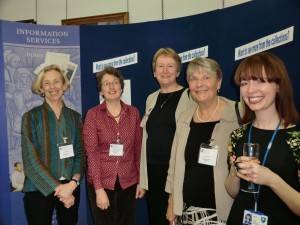
Some of the speakers: Professor Cathy Warwick, Dr Janette Allotey, Professor Helen King and Canon Julia Allison, with Claire Sexton (temporary archivist who has catalogued the RCM archives). Launch of the Royal College of Midwives archives at the Royal College of Obstetricians & Gynaecologists library, Sussex Place, Regent's Park, London. November 4th 2011.
The collection is now completely accessible to RCM members. Others are welcome to view them in the reading room at the RCOG by prior arrangement. Clare can arrange for items to be retrieved in advance of your visit.
The catalogue will soon be freely available via the Archives Hub: http://archiveshub.ac.uk.

